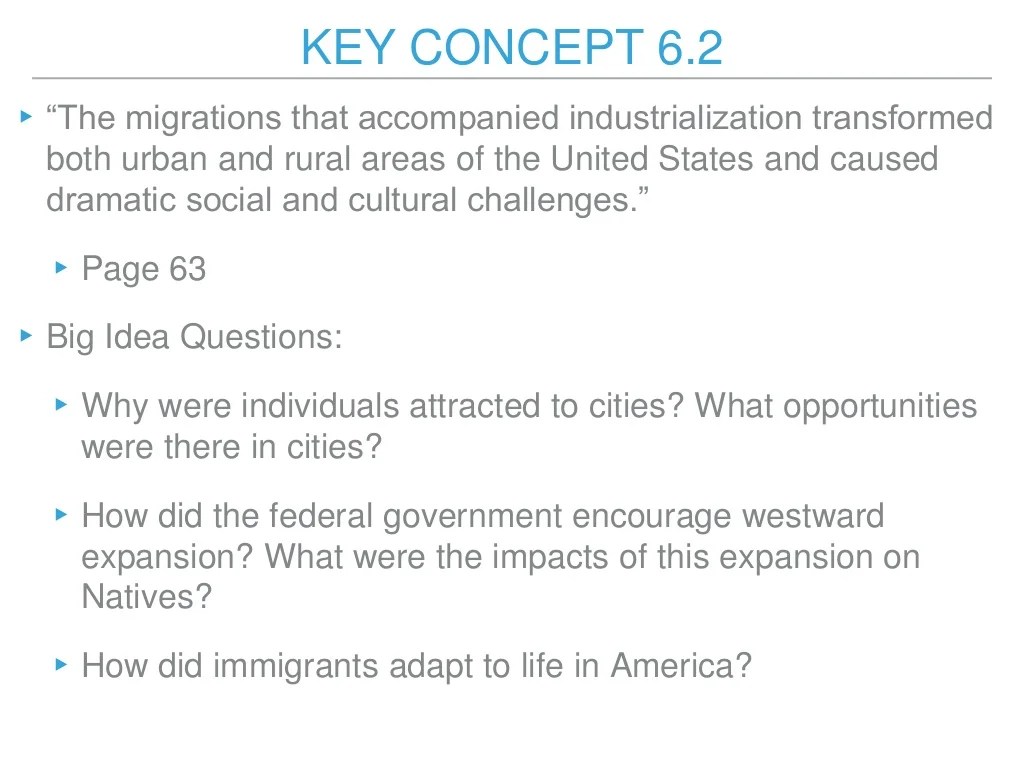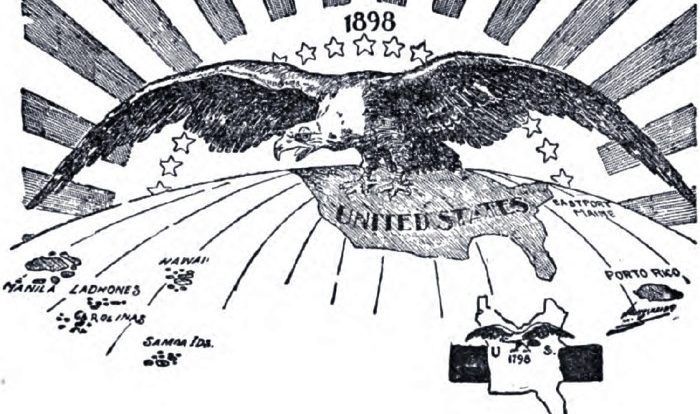Apush unit 6 key concepts – Embark on an enlightening journey through APUSH Unit 6, where we delve into the pivotal concepts that shaped the destiny of the United States. From the motivations of European colonists to the challenges of Reconstruction, this unit unravels the intricate tapestry of American history, offering a profound understanding of the nation’s past and its enduring legacy.
As we navigate this historical landscape, we will encounter the complexities of colonial America, the transformative power of the American Revolution, the triumphs and trials of the Early Republic, the rise of Andrew Jackson, the growing sectional tensions of the Antebellum Era, and the cataclysmic events of the Civil War and Reconstruction.
Each chapter of this unit provides a rich tapestry of insights, shedding light on the forces that have shaped the American experience.
Colonial America and the Atlantic World

European colonization of North America was driven by a complex interplay of economic, political, and religious motives. The promise of land, wealth, and religious freedom lured Europeans across the Atlantic, where they encountered a diverse array of Native American cultures and established colonies that would eventually form the United States.
Motivations of European Colonists
- Economic:The search for land, resources, and trade opportunities drove many Europeans to colonize North America.
- Political:Some colonists sought to escape religious persecution or political oppression in their home countries.
- Religious:Many colonists came to North America to establish their own religious communities or to convert Native Americans to Christianity.
Interactions with Native Americans
The interactions between European colonists and Native Americans were complex and often fraught with conflict. Colonists brought with them diseases, weapons, and a desire for land, which often led to wars and displacement of Native American populations.
Economic, Social, and Political Developments in the American Colonies
The American colonies developed their own unique economic, social, and political systems. The economy was based on agriculture, trade, and the exploitation of natural resources. Society was hierarchical, with a small elite at the top and a large majority of poor farmers and laborers at the bottom.
The political systems of the colonies varied, but all were based on the principles of representative government and limited self-rule.
The American Revolution
The American Revolution, a pivotal event in the history of the United States, was a period of political upheaval and armed conflict that resulted in the American colonies declaring independence from British rule. This revolution, sparked by a complex interplay of political, economic, and social factors, profoundly shaped the course of American history.
The revolution’s roots lay in the colonists’ growing dissatisfaction with British policies, particularly the imposition of taxes without representation. The Stamp Act of 1765 and the Townshend Acts of 1767 sparked widespread protests and resistance among the colonists. The Boston Tea Party in 1773 further escalated tensions, leading to the passage of the Intolerable Acts by the British Parliament.
These acts, seen as oppressive and punitive, galvanized the colonists and strengthened the movement for independence.
Key Figures and Ideas
The American Revolution was fueled by a diverse group of individuals, each contributing their unique talents and ideas to the cause. George Washington, a respected military leader, emerged as the commander-in-chief of the Continental Army. Thomas Jefferson, a brilliant writer and statesman, penned the Declaration of Independence, which eloquently articulated the colonists’ grievances and aspirations for self-governance.
The revolution was also marked by the rise of radical ideas, such as the natural rights of individuals and the right to self-determination. The Enlightenment’s emphasis on reason and individual liberty resonated deeply with the colonists, providing a philosophical underpinning for their struggle for independence.
Impact on American Society and Politics
The American Revolution had a profound impact on American society and politics. The establishment of the United States as an independent nation marked a new era of self-governance and democratic ideals. The Declaration of Independence and the Constitution, both products of the revolution, became foundational documents that continue to shape American values and institutions.
The revolution also had a transformative effect on American society. The war for independence fostered a sense of unity and nationalism among the colonists, laying the groundwork for a new American identity. The revolution also brought about social changes, including the abolition of slavery in the northern states and the expansion of rights for women.
The Early Republic
The formation of the United States in the late 18th century marked the beginning of a new era known as the Early Republic. This period was characterized by significant challenges and accomplishments as the young nation navigated the complexities of self-governance and nation-building.
Challenges and Accomplishments of the New American Government
The new American government faced numerous challenges, including:
- Establishing a stable and effective political system
- Creating a strong economy
- Defending the nation from foreign threats
- Addressing the issue of slavery
Despite these challenges, the Early Republic also witnessed several accomplishments:
- The establishment of a constitutional government based on the principles of limited government, separation of powers, and checks and balances
- The creation of a national identity and the fostering of a sense of unity among the diverse population
- The expansion of the nation’s territory through westward expansion and the acquisition of new lands
- The development of a vibrant economy based on agriculture, trade, and manufacturing
Development of Political Parties and the Expansion of the United States
The Early Republic saw the emergence of political parties, which played a crucial role in shaping the nation’s political landscape. The Federalists, led by Alexander Hamilton, advocated for a strong central government and a national bank. The Democratic-Republicans, led by Thomas Jefferson, favored states’ rights and a limited federal government.
The two parties engaged in fierce debates over issues such as the national debt, the role of the federal government, and the future of slavery.
During this period, the United States expanded its territory significantly. The Louisiana Purchase in 1803 doubled the size of the nation, and the acquisition of Florida in 1819 further expanded its southern borders. These acquisitions fueled westward expansion and led to conflicts with Native American tribes.
Social and Economic Changes
The Early Republic witnessed significant social and economic changes. The population grew rapidly, and new cities and towns emerged. The Industrial Revolution began to transform the economy, leading to the growth of factories and the rise of a working class.
The market economy expanded, and new technologies such as the cotton gin and the steamboat revolutionized agriculture and transportation.
However, the issue of slavery remained a divisive force in American society. The institution of slavery persisted in the South, despite the abolition of the slave trade in 1808. The debate over slavery would continue to intensify in the decades leading up to the Civil War.
The Age of Jackson

The Age of Jackson marked a significant era in American history, characterized by the rise of populism and the expansion of democracy. Andrew Jackson, a charismatic and controversial figure, emerged as a prominent leader during this period, leaving a lasting impact on American politics and society.Jackson’s
rise to power was fueled by his military success in the War of 1812, where he gained fame as a hero. His populist appeal resonated with the common people, who saw him as a champion of their interests. Jackson’s presidency was marked by several major events and issues, including the Indian Removal Act, the Nullification Crisis, and the Bank War.
Indian Removal Act
One of the most controversial policies of Jackson’s presidency was the Indian Removal Act of 1830. This act authorized the forced relocation of Native American tribes from their ancestral lands in the East to territories west of the Mississippi River.
The act was met with widespread resistance from Native American tribes, leading to conflicts such as the Black Hawk War.
Nullification Crisis
Another significant event during Jackson’s presidency was the Nullification Crisis. In 1832, South Carolina passed an ordinance nullifying the federal tariffs, arguing that they were unconstitutional. Jackson responded by threatening to use military force to enforce the tariffs, leading to a standoff between the federal government and the state of South Carolina.
Bank War
Jackson also engaged in a protracted conflict with the Second Bank of the United States, which he believed was a monopoly that favored the wealthy. Jackson vetoed the renewal of the bank’s charter, leading to a financial crisis known as the Bank War.
Social and Economic Changes
The Age of Jackson also witnessed significant social and economic changes. The rise of industrialization and the expansion of the market economy led to the growth of cities and the emergence of a new middle class. The period also saw the expansion of slavery into new territories, as well as the development of a more egalitarian society.
The Antebellum Era
The Antebellum Era refers to the period leading up to the American Civil War, from the 1820s to 1861. It was a time of great economic, social, and political change in the United States.
Causes and Consequences of Sectional Tensions
* Economic Differences:The North had a thriving industrial economy, while the South relied heavily on agriculture, particularly cotton. This economic disparity led to different political interests and ideologies.
Slavery
The issue of slavery became increasingly divisive. The North was predominantly anti-slavery, while the South was pro-slavery. This difference of opinion created deep tensions and fueled the growing sectional divide.
Expansion of Slavery
The acquisition of new territories in the West brought up the question of whether slavery would be allowed in these territories. The Missouri Compromise (1820) and the Compromise of 1850 attempted to address this issue, but ultimately failed to resolve the underlying tensions.
Major Events and Issues Leading to the Civil War, Apush unit 6 key concepts
* Nullification Crisis (1832):South Carolina threatened to secede from the Union over federal tariffs that it believed were unfair to the South.
Dred Scott v. Sandford (1857)
The Supreme Court ruled that slaves were not citizens and could not sue in federal court. This decision further inflamed tensions between the North and South.
Election of Abraham Lincoln (1860)
Lincoln’s election on an anti-slavery platform was seen by many Southerners as a threat to their way of life.
Secession of Southern States (1860-1861)
Following Lincoln’s election, seven Southern states seceded from the Union, forming the Confederate States of America.
Social and Economic Changes
* Industrialization:The North experienced rapid industrialization, leading to the growth of cities and the development of new technologies.
Immigration
Large numbers of immigrants from Europe arrived in the United States, primarily in the North.
Abolitionism
The abolitionist movement gained momentum, advocating for the immediate end of slavery.
To delve deeper into the key concepts of APUSH Unit 6, it’s helpful to visualize the historical context. Exploring resources like the ancient india map grade 6 can provide a clearer understanding of the geographical factors that shaped the development of ancient civilizations.
By integrating these visual aids into your study, you can enhance your comprehension of the complex interactions and events covered in APUSH Unit 6 key concepts.
The Civil War and Reconstruction
The Civil War, a defining conflict in American history, erupted from profound social, economic, and political divisions between the North and the South. Its causes, key figures, and profound impact on American society and politics are examined here, along with the challenges and accomplishments of the Reconstruction era that followed.
Causes of the Civil War
- Economic disparities:The Northern economy was industrialized, while the Southern economy relied heavily on slavery and agriculture. These differences led to tensions over tariffs, trade, and the expansion of slavery into new territories.
- Political differences:The North and South had differing views on the role of the federal government, with the North advocating for a strong central government and the South favoring states’ rights.
- Social differences:Slavery was a fundamental difference between the North and South. While slavery was abolished in the North, it was an integral part of Southern society and economy.
Key Figures of the Civil War
- Abraham Lincoln:The 16th President of the United States, Lincoln led the Union through the war and issued the Emancipation Proclamation, which freed slaves in Confederate-held territory.
- Jefferson Davis:The President of the Confederate States of America, Davis led the South in its fight for independence.
- Ulysses S. Grant:A Union general, Grant led the Union Army to victory at Vicksburg and Appomattox Court House.
- Robert E. Lee:A Confederate general, Lee was one of the most skilled military commanders in American history.
Impact of the Civil War
- End of slavery:The war led to the abolition of slavery in the United States, fulfilling the goal of the abolitionist movement.
- Preservation of the Union:The Union victory prevented the secession of the Southern states and preserved the United States as a single nation.
- Economic and social transformation:The war accelerated industrialization in the North and led to significant changes in Southern society, including the decline of the plantation system.
Reconstruction Era
After the Civil War, the Reconstruction era (1865-1877) was a period of significant social, political, and economic change in the United States.
Challenges of Reconstruction
- Reintegrating the South:The task of reintegrating the Confederate states into the Union was complex and challenging, involving issues such as amnesty for former Confederates and the rights of freed slaves.
- Economic recovery:The war had devastated the Southern economy, and rebuilding infrastructure and industries was a major challenge.
- Resistance to racial equality:Many white Southerners resisted efforts to grant freed slaves equal rights, leading to violence and discrimination.
Accomplishments of Reconstruction
- 13th, 14th, and 15th Amendments:These amendments abolished slavery, granted citizenship to freed slaves, and prohibited states from depriving citizens of life, liberty, or property without due process of law.
- Establishment of black political participation:Freed slaves gained the right to vote and hold office, and many African Americans were elected to Congress and state legislatures.
- Educational opportunities:Reconstruction saw the establishment of schools and colleges for freed slaves, providing them with access to education and job opportunities.
Query Resolution: Apush Unit 6 Key Concepts
What are the key motivations of European colonists in North America?
Economic opportunities, religious freedom, and political asylum were among the primary motivations.
How did the American Revolution impact American society and politics?
It led to the establishment of a new nation based on democratic principles, with a profound impact on social structures and political institutions.
What were the major challenges faced by the new American government?
Establishing a stable economy, creating a functioning political system, and addressing the issue of slavery were among the key challenges.
How did Andrew Jackson’s presidency shape American politics?
Jackson’s populist policies and his expansionist stance had a significant impact on the political landscape, strengthening the role of the common man and expanding the nation’s territory.
What were the major causes of the Civil War?
Sectional tensions over slavery, economic differences, and political power struggles were the primary causes of the conflict.
